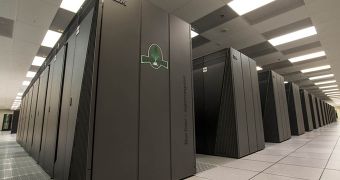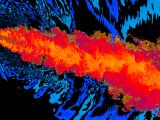Sequoia may no longer be the world mightiest supercomputer (that's the Titan now), but it is the second greatest, and the one that the US National Nuclear Security Administration will use to make top-secret analyses, but noise will have to do as subject matter in the meantime. Indeed, the petascale Blue Gene/Q supercomputer constructed by IBM has not yet started to do what it was originally meant for (nuclear weapons simulation).
The researchers from Stanford are still making sure the system runs seamlessly and without any errors, or a low enough number that they can be dealt with over time.
Computational fluid dynamics simulations were the means chosen to test this, and the team from Stanford figured it would gain understanding in another matter while it was at it.
Joseph Nichols, a research associate in the center, is the one that worked on the newly installed Sequoia IBM Bluegene/Q system at Lawrence Livermore National Laboratories (LLNL) and was able to show for the first time that million-core fluid dynamics simulations are possible.
That is how Sequoia ended up studying the noise made by supersonic jets, especially the exhausts of high-performance aircraft during takeoff and landing.
Predictive simulations (advanced computer models) will help engineers come up with new and better aircraft engines.
Making said engines quieter is another side-benefit that the solving of this fluid dynamics problem can enable.
So far, everything seems to be going well. Computational fluid dynamics simulations require a fine balance between computation, memory and communication components.
If the research into jet noise proves successful, it will mean that the supercomputer can safely and confidently assume its real role.
And since the CFD simulation has crossed the 1 million core mark (this is the first time this mark has been overcome), the rest of the cores should be able to successfully integrate in the activity. If they do, the “shakeout” period will be considered a success and the supercomputer will be ready to start its work for the government in March (2013).

 14 DAY TRIAL //
14 DAY TRIAL // 
